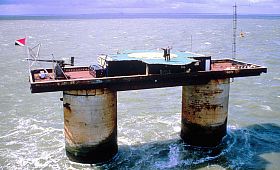|
Krampfer Palace
Krampfer Palace (german: Schloß Krampfer) is 18th-century palace located in the village of Krampfer in the municipality of Plattenburg, near Perleberg, Prignitz district, Brandenburg, Germany. The palace estate covers approximately . There have been a number of spelling variations for Krampfer over the years, including Cramuir, Kranauer, Cramber, tu Kramvyr, van Kraenvoerde and Kranffer. History Herwichus de Cramvir first documented the existence of Krampfer in 1293. In 1413, the village of Krampfer was captured by the Möllendorf family, who ruled it until 1945 when it was removed from their control. In 1608, the village of Krampfer burned to the ground. In the seventeenth century the estate was acquired by Georg von Blumenthal and it remained in this family until his line died out. In 1792, the palace was acquired by Hans-Georg Gottlob von Möllendorf, who remodelled it in 1809. It was again remodeled in 1909 by Ottocar Richard von Möllendorf. After the estate was expropri ... [...More Info...] [...Related Items...] OR: [Wikipedia] [Google] [Baidu] |
Brandenburg
Brandenburg (; nds, Brannenborg; dsb, Bramborska ) is a state in the northeast of Germany bordering the states of Mecklenburg-Vorpommern, Lower Saxony, Saxony-Anhalt, and Saxony, as well as the country of Poland. With an area of 29,480 square kilometres (11,382 square miles) and a population of 2.5 million residents, it is the fifth-largest German state by area and the tenth-most populous. Potsdam is the state capital and largest city, and other major towns are Cottbus, Brandenburg an der Havel and Frankfurt (Oder). Brandenburg surrounds the national capital and city-state of Berlin, and together they form the Berlin/Brandenburg Metropolitan Region, the third-largest metropolitan area in Germany with a total population of about 6.2 million. There was an unsuccessful attempt to unify both states in 1996 and the states cooperate on many matters to this day. Brandenburg originated in the Northern March in the 900s AD, from areas conquered from the Wends. It later became the ... [...More Info...] [...Related Items...] OR: [Wikipedia] [Google] [Baidu] |
Landwirtschaftliche Produktionsgenossenschaft
In East Germany, a Landwirtschaftliche Produktionsgenossenschaft (LPG) ( English: 'Agricultural Production Cooperative') was a large, collectivised farm in East Germany, corresponding to the Soviet kolkhoz. In the agriculture of East Germany, the collectivisation of private and state-owned agricultural land was the progression of a policy of food security (at the expense of large scale bourgeois farmers). It began in the years of Soviet occupation (1945–48) as part of the need to govern resources in the Soviet Sector. Beginning with the forced expropriation of all land holdings in excess of , land was redistributed in small packets of around to incoming landless refugees driven off formerly German-held territories to the east. These ''Neubauern'' (new farmers) were given limited ownership rights to the land, meaning that they kept it as long as they worked it. In the early 1950s, remaining farmers with largish holdings () were effectively driven out of business through ... [...More Info...] [...Related Items...] OR: [Wikipedia] [Google] [Baidu] |
Gable
A gable is the generally triangular portion of a wall between the edges of intersecting roof pitches. The shape of the gable and how it is detailed depends on the structural system used, which reflects climate, material availability, and aesthetic concerns. The term gable wall or gable end more commonly refers to the entire wall, including the gable and the wall below it. Some types of roof do not have a gable (for example hip roofs do not). One common type of roof with gables, the gable roof, is named after its prominent gables. A parapet made of a series of curves ( Dutch gable) or horizontal steps ( crow-stepped gable) may hide the diagonal lines of the roof. Gable ends of more recent buildings are often treated in the same way as the Classic pediment form. But unlike Classical structures, which operate through trabeation, the gable ends of many buildings are actually bearing-wall structures. Gable style is also used in the design of fabric structures, with varying d ... [...More Info...] [...Related Items...] OR: [Wikipedia] [Google] [Baidu] |
Micronation
A micronation is a political entity whose members claim that they belong to an independent nation or sovereign state, but which lacks legal recognition by world governments or major international organizations. Micronations are classified separately from de facto states and quasi-states; they are also not considered to be autonomous nor self-governing as they lack the legal basis in international law for their existence. Micronations' activities are almost always trivial enough to be ignored rather than challenged by the established nations whose territory they claim—referred to in micronationalism as "macronations." Several micronations have issued coins, flags, postage stamps, passports, medals and other state-related items, some as a source of revenue. Motivations for the creation of micronations include theoretical experimentation, political protest, artistic expression, personal entertainment and the conduct of criminal activity. The study of micronationalism is kno ... [...More Info...] [...Related Items...] OR: [Wikipedia] [Google] [Baidu] |
EBay
eBay Inc. ( ) is an American multinational e-commerce company based in San Jose, California, that facilitates consumer-to-consumer and business-to-consumer sales through its website. eBay was founded by Pierre Omidyar in 1995 and became a notable success story of the dot-com bubble. eBay is a multibillion-dollar business with operations in about 32 countries, as of 2019. The company manages the eBay website, an online auction and shopping website in which people and businesses buy and sell a wide variety of goods and services worldwide. The website is free to use for buyers, but sellers are charged fees for listing items after a limited number of free listings, and an additional or separate fee when those items are sold. In addition to eBay's original auction-style sales, the website has evolved and expanded to include: instant "Buy It Now" shopping; shopping by Universal Product Code, ISBN, or other kind of SKU number (via Half.com, which was shut down in 2017); a ... [...More Info...] [...Related Items...] OR: [Wikipedia] [Google] [Baidu] |
|
_1987%2C_MiNr_3090.jpg)



